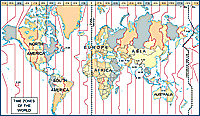State of the World's Mothers: 2008

Save the Children's annual Mothers’ Index
Save the Children's eighth annual Mothers’ Index helps document conditions for mothers and children in 125 countries—26 developed nations and 99 in the developing world—and shows where mothers fare best and where they face the greatest hardships. The Mothers' Index relies on information published by governments, research institutions, and international agencies. The 10 bottom-ranked countries in this year's Mothers’ Index are a reverse image of the top 10, performing poorly on all indicators. Conditions for mothers and their children in these countries are devastating.
| Highest Ranking | Country | Lowest Ranking | Country |
| 1. | Sweden | 137. | Ethiopia |
| 2. | Norway | 138. | Mali |
| 3. | Iceland | 139. | Djibouti |
| 4. | New Zealand | 140. | Eritrea |
| 5. | Denmark | 141. | Guinea-Bissau |
| 6. | Australia | 142. | Angola |
| 7. | Finland | 143. | Sierra Leone |
| 8. | Iceland | 144. | Yemen |
| 9. | Germany | 145. | Chad |
| 10. | France | 146. | Niger |
The six indicators of women's well-being are:
- Lifetime risk of maternal mortality
- Percent of women using modern contraception
- Percent of births attended by skilled personnel
- Percent of pregnant women with anemia
- Adult female literacy rate
- Participation of women in national government
The four indicators of children's well-being are:
- Infant mortality rate
- Gross primary enrollment ratio
- Percent of population with access to safe water
- Percent of children under age 5 suffering from moderate or severe nutritional wasting
Scandinavian countries "sweep" the top positions while countries in sub-Saharan Africa dominate the lowest tier. While industrialized countries cluster tightly at the top of the Index—with the majority of these countries performing well on all indicators—the highest-ranking countries attain very high scores for mother's and children's health and educational status.
For more information, see The Full Report: State of the World's Mothers (PDF)








